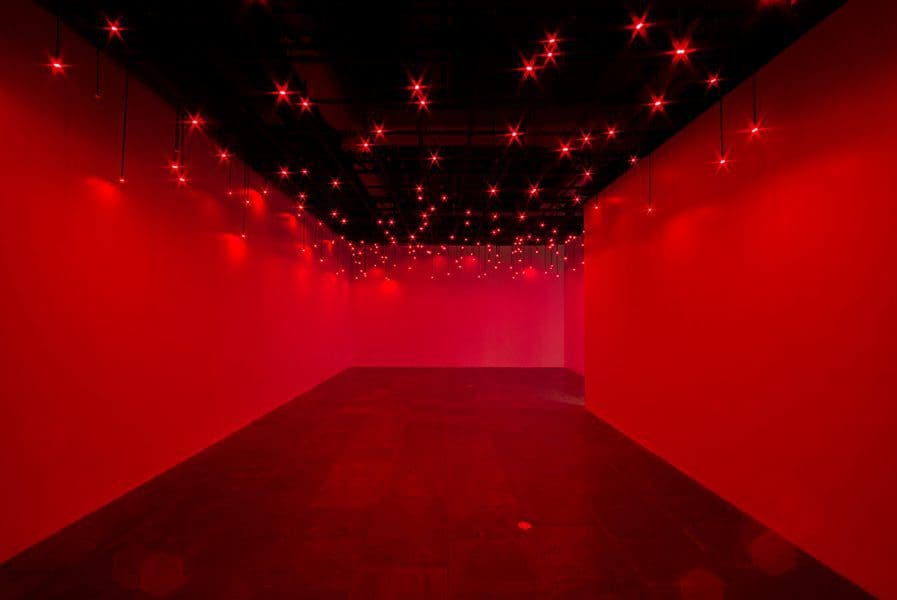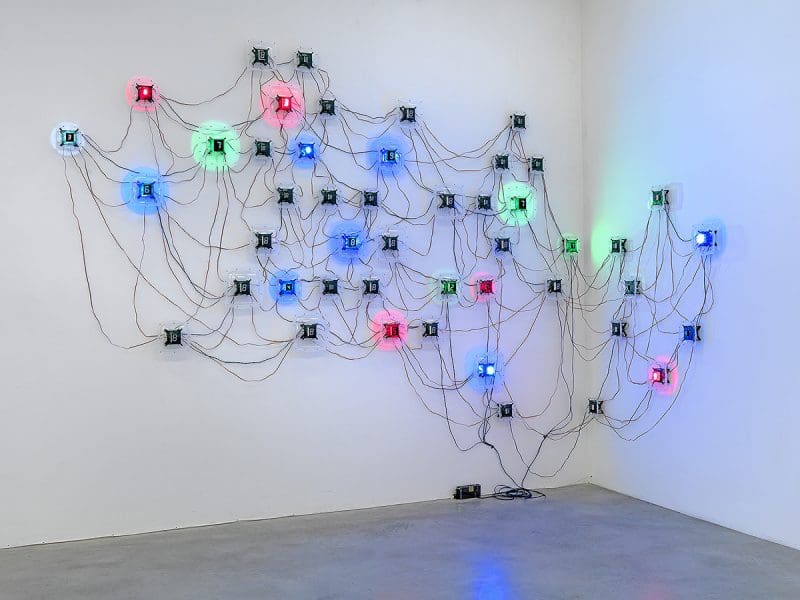
Piercing the veil
A new exhibition at Buxton Contemporary finds a rich complexity in the shadowy terrain between life and death.

Tatsuo Miyajima, Arrow of Time (Unfinished Life), 2016, LED, IC, electric wire, iron, image courtesy the artist, The Metropolitan Museum of Art and Lisson Gallery © the artist, photograph: Thomas B. Ling.

Tatsuo Miyajima, Life (Le Corps sans Organes) No. 17, 2013, LED, IC, electric wire, microcomputer by Ikegami, program, plastic cover, passive sensor, steel, image courtesy the artist and Lisson Gallery © the artist, photograph: Ken Adlard.

Tatsuo Miyajima, Museum of Contemporary Art Australia, 2015, photograph: Anna Kučera.

Tatsuo Miyajima, Diamond in You No. 8, 2010, LED, IC, electric wire, stainless mirror, iron, The Ekard Collection, image courtesy the artist and Buchmann Galerie © the artist, photograph: HG Gaul.

Tatsuo Miyajima, Diamond in You No. 8, 2010, LED, IC, electric wire, stainless mirror, iron, The Ekard Collection, image courtesy the artist and Buchmann Galerie © the artist, photograph: HG Gaul.
“It has been an epic install, we’ve pretty well had to rebuild whole galleries for this exhibition. Last week we shovelled eight tonnes of coal into one gallery, and along the corridor gallery there is a pool almost 20 metres in length, with floating LEDs and white lotuses.” MCA Chief Curator Rachel Kent is talking about Tatsuo Miyajima: Connect with Everything, the MCA’s major summer exhibition. It’s always hard to know what to expect, but from these evocative descriptions alone, it sounds like a striking and poetic combination of unusual and symbolically loaded materials.
It includes everything from whole-room installations to paintings, prints, performance videos, drawings and sketchbooks. Grand-scale highlights include Mega Death, a floor-to-ceiling field of over 3,000 blue LED counters, originally created for the Japanese Pavilion at the 1999 Venice Biennale.
Kent gives a haunting description of the impetus for this work, created on the cusp of a new century. “The commissioning curator asked Tatsuo to look back across the 20th century, and make a reference to that in his work,” she explains. “Often people say it was the era of communications, technology, growth in industry, but to Tatsuo it was an era of war and devastation. The work is called Mega Death in reference to the industrial scale of death in the 20th century, in places like Auschwitz, Hiroshima and Nagasaki. It functions as a memorial.”

There are moments when all the counters go blank simultaneously. “All of a sudden you’re standing in a completely pitch-black room for a couple of seconds,” Kent says, “and it’s this momentary experience of death.”
But Connect with Everything is not all doom and gloom. Arrow of Time, 2016, is a carpeted room where visitors can lounge on cushions while looking up at a cosmic, meteoric installation of red diodes. There are works that are mirrored, works that are quiet and meditative, and projections from the ceiling down onto the floor that, in past exhibitions, have inspired audiences to dance beneath them.
Kent explains that for Miyajima, the work doesn’t exist until it has an audience. “It’s a very immersive, participatory kind of exhibition. You’re very much situated within, and as a part of, the work physically. You’re bathed in light in some spaces, or reflected in shiny, rippled and warped surfaces.” Kent describes the artist’s sketchbooks, shown publicly for the first time at the MCA, as “a treasure trove of material” making them “quiet highlights”.
Kent sums the exhibition up as a balance of seriousness and play, and clarifies that although there is a focus on programming and technology, “the meaning of the work is very much about human concerns: time, life and death, cycles of history and humanity.” With its combination of grand and intimate scales, natural and technological materials, Tatsuo Miyajima: Connect with Everything is set to be a site for sensory immersion, discovery and contemplation this summer.
Tatsuo Miyajima: Connect with Everything
Museum of Contemporary Art Australia
3 November – 5 March